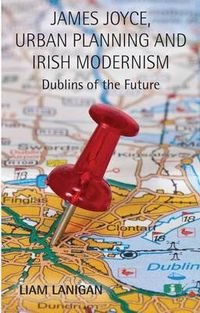
endast ny
James Joyce, Urban Planning and Irish Modernism
Irish writing in the modernist era is often regarded as a largely rural affair, engaging with the city in fleeting, often disparaging ways, with Joyce cast as a defiant exception. James Joyce, Urban Planning and Irish Modernism shows how an urban modernist tradition, responsive to the particular political, social, and cultural conditions of Dublin, emerged in Ireland at this time. Examining how Irish writing participated in a broader cultural response to the challenges of urbanisation, best exemplified by the urban planning movement, this book explores how Irish literature sought to reimagine and re-appropriate a city synonymous with poverty and colonial misrule, and to reconcile the ruralist rhetoric of revivalism and nationalism with the necessity for a capital city in an emergent state. The examines how Joyce's works define the city in terms of the tension between individual, subjective impressions of what the city might be made to mean, and architectonic processes of urban control.
Utgiven: 2014
ISBN: 9781137378194
Förlag: Palgrave Macmillan
Format: Inbunden
Språk: Engelska
Sidor: 243 st
Irish writing in the modernist era is often regarded as a largely rural affair, engaging with the city in fleeting, often disparaging ways, with Joyce cast as a defiant exception. James Joyce, Urban Planning and Irish Modernism shows how an urban modernist tradition, responsive to the particular political, social, and cultural conditions of Dublin, emerged in Ireland at this time. Examining how Irish writing participated in a broader cultural response to the challenges of urbanisation, best exemplified by the urban planning movement, this book explores how Irish literature sought to reimagine and re-appropriate a city synonymous with poverty and colonial misrule, and to reconcile the ruralist rhetoric of revivalism and nationalism with the necessity for a capital city in an emergent state. The examines how Joyce's works define the city in terms of the tension between individual, subjective impressions of what the city might be made to mean, and architectonic processes of urban control.
Ny bok
831 kr874 kr
5% studentrabatt med Studentapan
Begagnad bok (0 st)
Varje vecka tillkommer tusentals nya säljare. Bevaka boken så får du meddelande när den finns tillgänglig igen.



